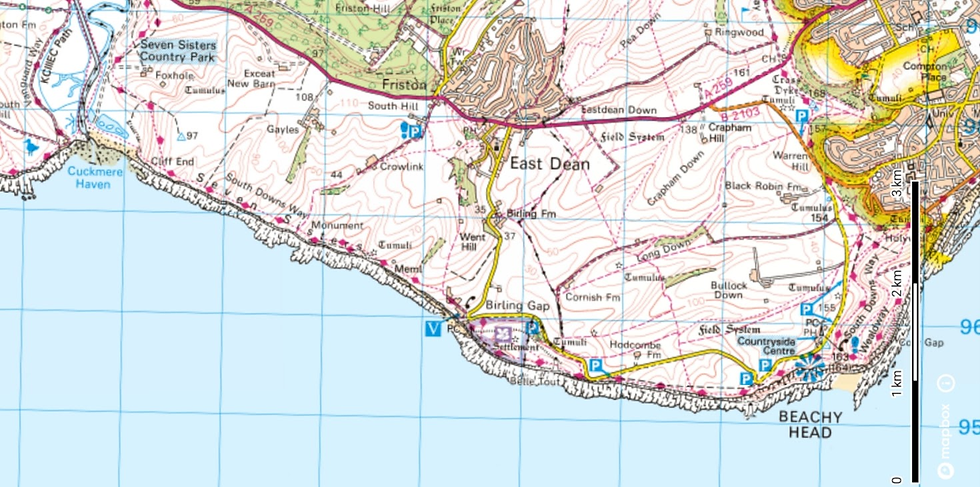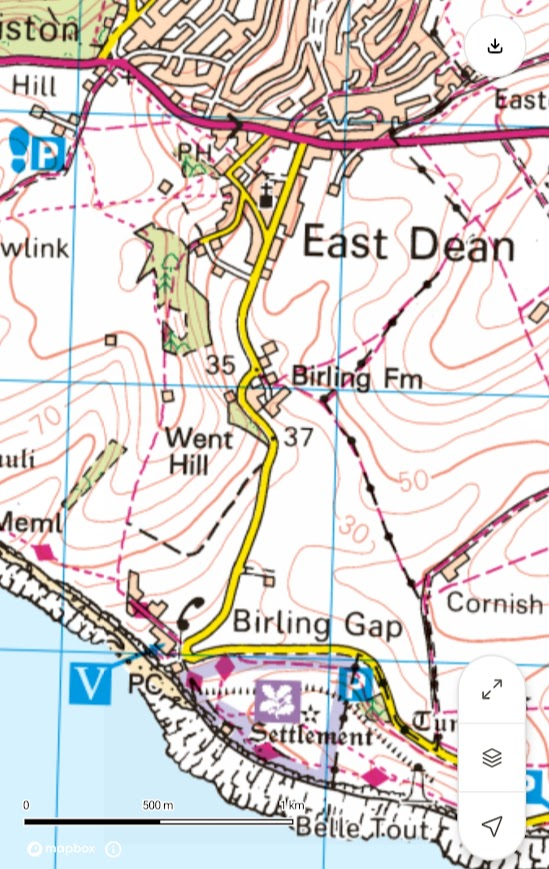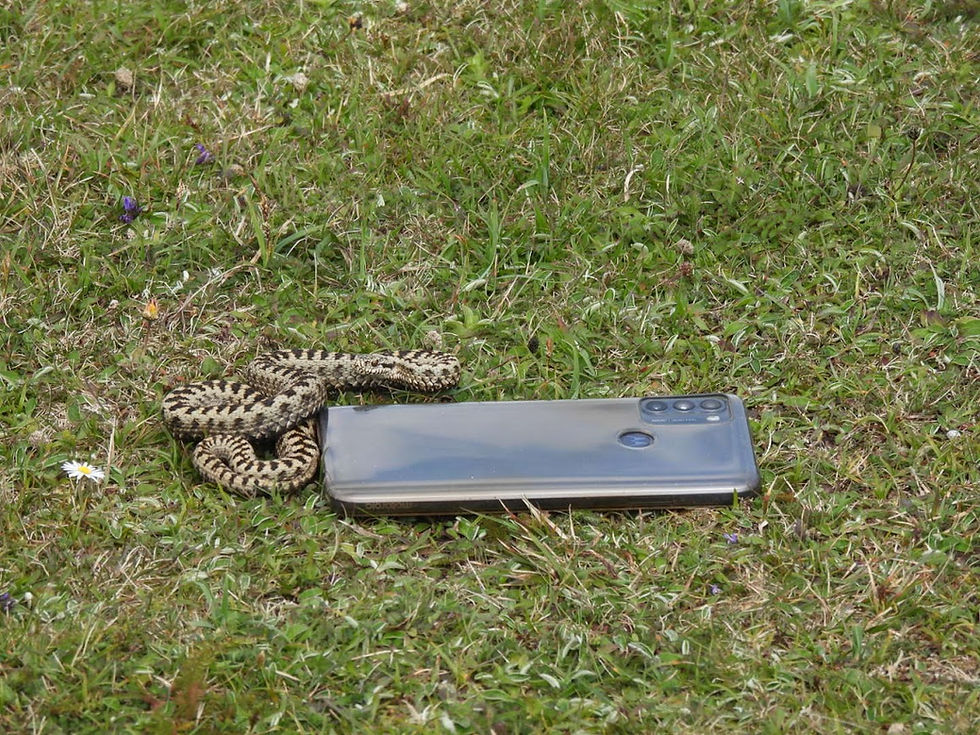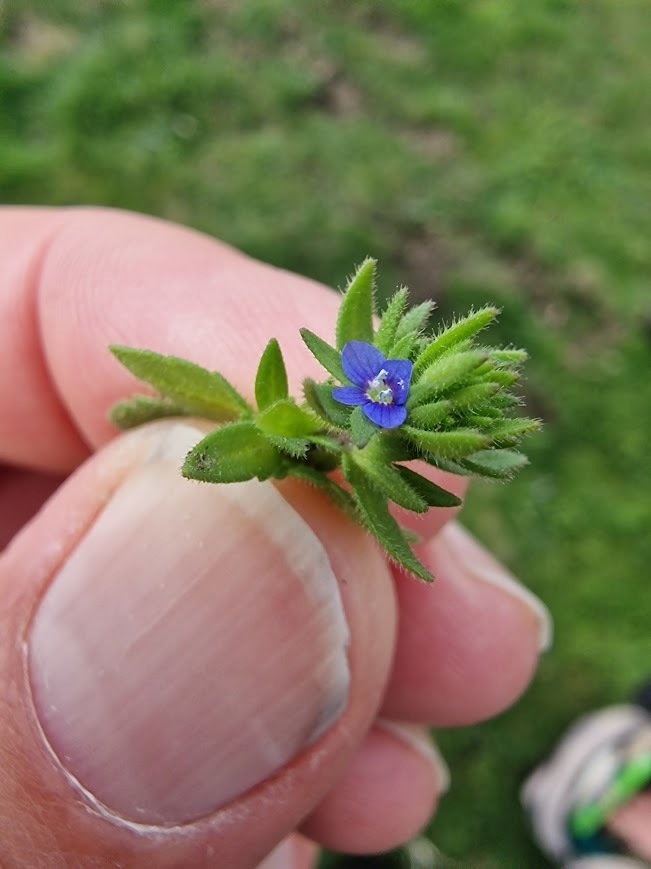The Adder Who Came To Lunch and some vascular plants at Birling Gap. 01.05.24
- Sim Elliott
- May 3, 2024
- 4 min read
We saw this Adder on a Sussex Botanical Recording Society field meeting at Birling Gap. For details of the Sussex Botanica; Recording Society see: Field Meetings - Sussex Botanical Recording Society (sussexflora.org.uk) Adders can be found anywhere from heathland to woodland, meadows and coastal dunes, as long as there's a quiet spot to sunbathe and enough dense vegetation to disappear into if they feel threatened. They spend the winter in hiding until the first days of spring, when the earth starts to warm and the Adders awaken. Males emerge first and will spend several weeks basking, often returning to the same spot each day. Dancing Adders | Sussex Wildlife Trust
Basking Adders were one of the signs of Spring in Sussex. Sadly though, basking adders may soon just be a distant memory, as our Adders are in serious trouble and need our help more than ever before. A combination of habitat loss, disturbance (especially during the spring) and deliberate persecution, are all still contributing to their decline in Britain. It has been estimated that our amazing, beautiful Adders could become extinct within the next 10-20 years unless the current trend rapidly improves Celebrating and protecting Adders | Sussex Wildlife Trust
Whilst Adders can be seen anywhere, seeing them is now rare. So if you come to Birling Gap just to see an Adder you will probably be disappointed. But there are many other reasons to visit Birling Gap and its surrounding Downs (west to Beachy Head and east to Cuckmere Haven), particularly its chalk-specialist vascular plants, including Early Purple Orchids, Common Spotted Orchids and Pyramid Orchids, and other rarer orchids (mid April to August) and butterflies, inducing chalk specialists like Adonis Blues (May to September) and Chalkhill Blues (July to September)
You can catch 13X bus from Brighton or Eastbourne directly to Birling Gap (or Beachy Head, or Exeat for Cuckmere Haven) but only on Sundays and bank holidays. The bus runs half hourly and the journey time is 70 minutes from Brighton to Birling Gap, or 30 minutes from Eastbourne. Coaster 13X - Eastbourne - Brighton | Brighton & Hove Buses On other days you can catch the 12, 12A or 12X from Brighton or Eastbourne to East Dean, and then walk from East Dean to Birling Gap, via footpaths - see map below . Journey time on 12X from Brighton to East Dean: 65 minutes; 12A, 80 minutes; from Eastbourne on the 12X or 12A to East Dean: 16 mins; from Brighton. The busses typically run every 20 minutes Coaster 12 - Eastbourne - Brighton | Brighton & Hove Buses
Vipera berus Adder
The adder is one of our three native snake species, most often found on heaths, moors and coastal areas. However, its secretive nature and camouflaged markings mean it often goes unnoticed. Whilst it has a large range across the UK, recent declines especially in central England, mean it is of major conservation concern. The adder is the UK’s only venomous snake. Though potentially serious, adder bites to humans or dogs are very rarely fatal. There are only around ten recorded cases of death from adder bite in the last 100 years, and most bites occur when the snake has been disturbed or deliberately antagonised.
Where to find them: The adder is the most northerly member of the viper family and is found throughout Britain, from the south coast of England to the far north of Scotland. In Scandinavia its range even extends into the Arctic Circle. It is not found in Ireland. Adders like open habitats such as heathland, moorland, open woodland and sea cliffs, typically on free-draining soils such as chalk or sand. In most of their range adders rarely enter gardens.
Identification: The adder is easily recognised by a dark, continuous 'zig-zag' stripe along its back. There is also a row of dark spots along each side. The background colour varies from grey-white in the male to shades of brown or copper in the female. Young adders are copper, light brown or reddish, with darker brown markings. Completely black adders occur in some areas. Adders can grow to around 60cm in length and have rather a stocky appearance.
Lifecycle: Mating takes place in April/May and female adders incubate their eggs internally, rather than laying shelled eggs (which the grass snake does). Adders give birth to around 6 to 20 live young in August or September. Adders feed largely on small rodents and lizards. They hibernate from around October to February, depending on local conditions. Adders typically live to 5-10 years. Their main predators include birds such as crows and buzzards. Adder | Amphibian and Reptile Conservation (arc-trust.org)
Vascular Plants
Theses are just a few of the things that the Sussex Botanical Recording Society saw. The landscape of the Birling Gap area is lowland calcareous grassland which is conservation grazed with cows and ponies; an area close to the Belle Tout lighthouse is Chalk Heath i.e. acid soils blown onto chalk at the end of the last glaciation.
Teucrium scorodonia Wood Sage
Cerastium fontanum Common Mouse-Ear
Veronica arvensis Field Speedwell
Bryonia cretica White Bryony
Orchis mascula Early Purple Orchid
Complex Aquilegia vulgaris (probably a garden escapee)
Carex flacca Glaucous Sedge
Sherardia arvensis Field Madder
Erodium cicutarium Common Stork's-Bill
Genus Orobanche Broomrape species
Ornithogalum umbellatum Common Star-of-Bethlehem, naturalised introduced species
Arenaria serpyllifolia Thyme-leaved Sandwort
Ranunculus bulbosus Bulbous Buttercup, with double flower
And a bird, and an insect
Great Tit, Parus major
Dolycoris baccarum Hairy Shield Bug




















Comments